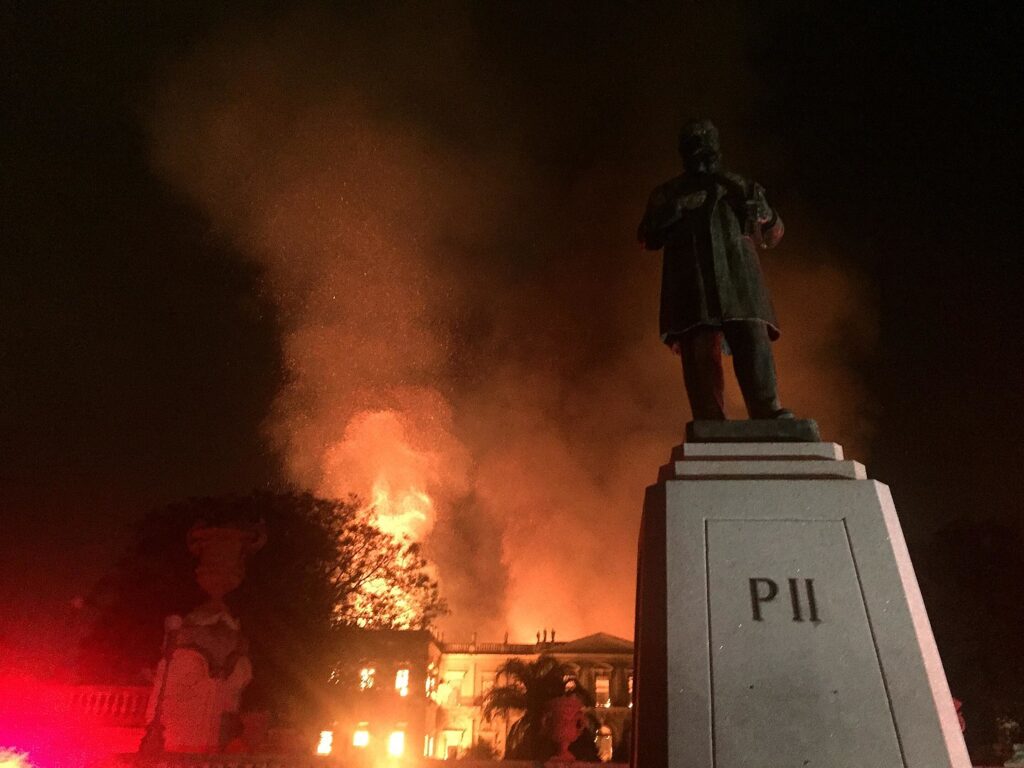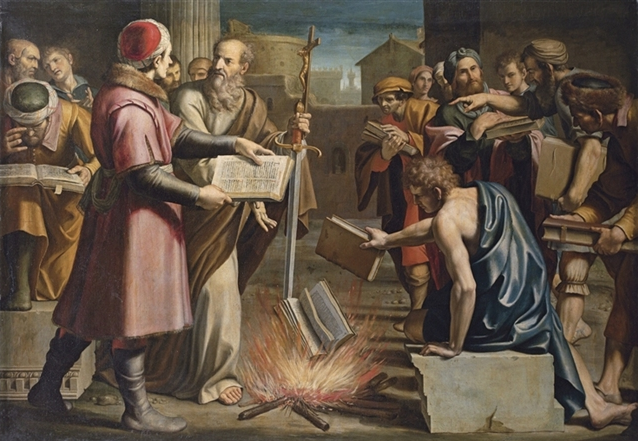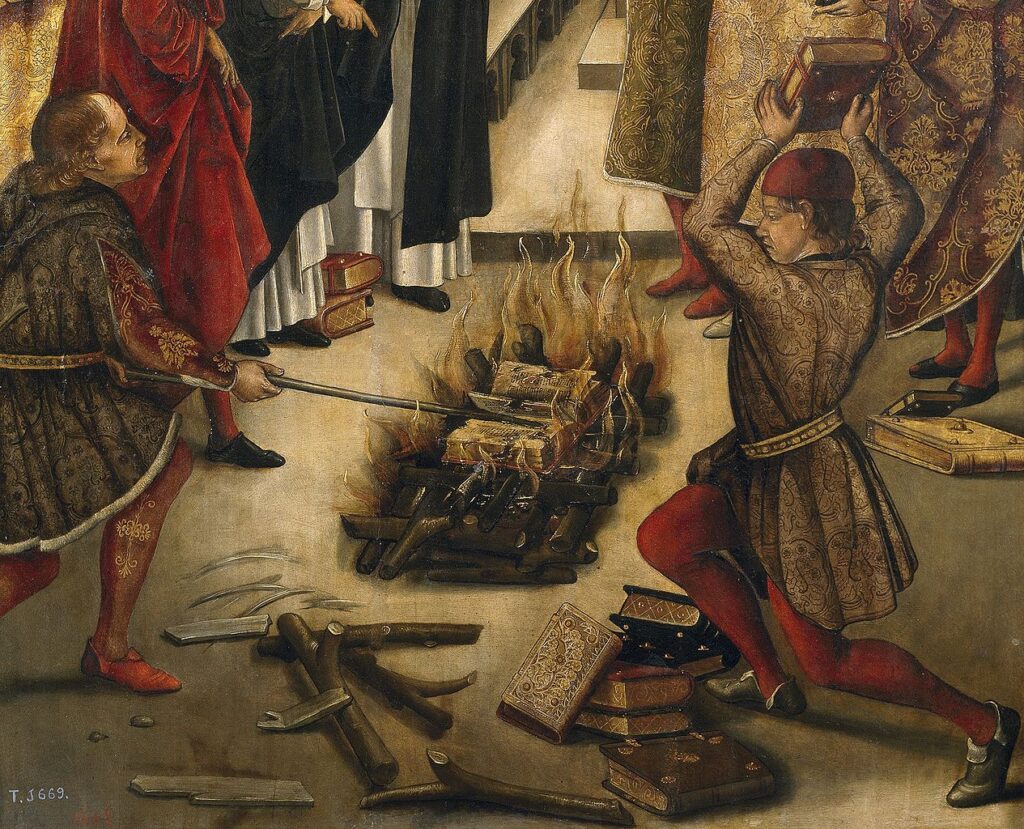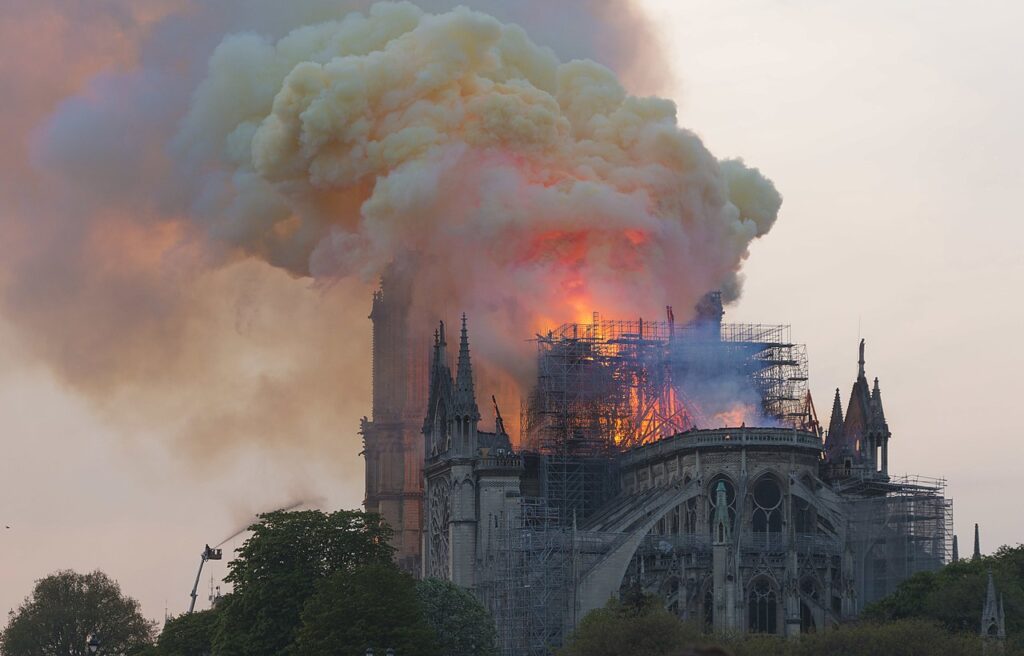
Fire at the National Museum of Brazil, in Rio de Janeiro, on 2 September 2018. Image: Wikipedia .
By Mariana Meneses
On September 2, 2018, a devastating fire broke out at the National Museum of Brazil, located in Rio de Janeiro.
The museum was home to over 20 million artifacts, including dinosaur bones, mummies, and historical documents, most of which were destroyed in the fire. The flames spread quickly, and firefighters struggled to contain the fire due to a lack of water and fire hydrants in the area. The fire burned for hours, and by the time it was extinguished, the museum was left in ruins.
Among the items lost were original documents and specimens that had never been digitized or catalogued, leaving gaps in our understanding of history that can never be filled. This devastating event serves as a reminder of the vital importance of memory and the need for technology that allows us to preserve and maintain an accurate record of the past.
Throughout history, books and memories have been deliberately burned and erased by dominant powers to control and manipulate societies.
In the Middle Ages, for instance, the Church destroyed countless books and documents that were seen as heretical or contrary to the teachings of the Bible. In 1497, the city of Florence was under control of the Dominican friar Girolamo Savonarola, whose followers instigated the famous bonfire of the vanities in which thousands of books and precious works of art were burned in the public square for fear they would provoke immoral behavior.

Lucio Massari’s ‘Saint Paul and the burning of pagan books at Ephesus’ (1612). “The book burning at Ephesus is an incident recorded in the Acts of the Apostles, where Christian converts at Ephesus, influenced by Paul the Apostle, burned their books of magic”. Image: Wikipedia .
The practice of “book burning” and destruction of historical artifacts has continued throughout the centuries, with oppressive regimes and conquerors destroying the cultural heritage of the people they rule.
By wiping out the cultural memory of a people, these dominant powers were able to impose their own worldview and ideology, often at the expense of the diversity and richness of other cultures. For example, in 2001 the Taliban rulers of Afghanistan dynamited two statues called the Buddhas of Bamiyan, which had been carved into a hillside 1,800 years earlier and had been declared a world heritage site by UNESCO, on the pretext that they were heretical idols.

The taller Buddha of Bamiyan before (left picture) and after destruction (right). UNESCO/A Lezine.
While the destruction of the National Museum of Brazil may not have been as intentional as historical examples of book burning, the neglect in preserving and protecting this cultural institution is just as concerning.
The lack of proper maintenance and funding for the museum left it vulnerable to disaster.
The fire that destroyed the museum was not entirely unexpected, as the museum had been facing financial difficulties and neglect for years. Reports suggest that the building suffered from poor infrastructure, outdated fire safety systems, and lack of sufficient personnel to monitor and maintain the exhibits. The museum had been asking for funding and support for years to address these issues, but despite warnings from the museum staff and experts in the field, the necessary action to prevent the disaster was not taken.
Marina Silva, a well-known Brazilian environmentalist and politician, called the episode “a lobotomy of the Brazilian memory”. The consequences of the fire were referred on the media as a “devastating blow to South America’s cultural heritage”.
The fire at the National Museum was a tragedy not only for Brazil but globally. The museum was one of the largest natural history and anthropology museums in the Americas and housed numerous irreplaceable artifacts and specimens. The museum’s collection included items from around the world, including the oldest human fossil ever found in Brazil, frescoes from Pompeii, and artifacts from ancient Egypt and Greece.
The Fundamental Importance of Memory
The loss of cultural heritage is not only a tragedy for the people directly affected, but it has long-lasting consequences for the rest of the world.
Memory is a fundamental component of life in societies. It enables us to learn from past experiences, understand our cultural heritage, and build collective identities. Without memory, we would be unable to transmit knowledge, values, and traditions to future generations, leading to a disconnection from our roots and a loss of identity.
When we forget the past, we lose the ability to learn from it and to make informed decisions in the present.
Memory provides a sense of continuity and connection to the past, allowing us to contextualize the present and envision the future. Without a sense of history, we are doomed to repeat the mistakes of the past and to perpetuate systems of oppression and injustice. Thus, the need to preserve and protect our cultural heritage is not just a matter of personal or national pride, but a vital part of our shared human experience.

Pedro Berruguete’s ‘Santo Domingo de Guzmán y los albigenses’. “This portrays the story of a dispute between Saint Dominic and the Cathars in which the books of both were thrown in a fire and St. Dominic’s books were miraculously preserved from the flames. This was believed to symbolize the wrongness of the Cathars teachings.” Wikimedia Commons.
The National Museum fire has sparked a global conversation about the need for increased funding and support for museums and cultural institutions.
Experts have highlighted the potential of digital technology for preserving and sharing cultural heritage (for instance, check out how CT scans are helping to preserve mummies), but also stressed the importance of investing in physical infrastructure to protect these treasures for future generations.
The devastating loss of the National Museum’s collection in Brazil underscores the urgency of preserving our collective memory and the need to prioritize funding and support for cultural heritage preservation. While efforts have been made to rebuild and restore the museum, the damage caused by the fire is irreversible, leaving a profound impact on the world’s cultural landscape.

Records of the past are fragile, and many times we’ve had important parts of humanity’s memory erased – We should be aware of how our immediate interests may tamper our future ability to remember and learn from the past. ‘Notre-Dame en feu’. GodefroyParis.
Another recent tragedy highlighted the importance of using technology to prevent such significant cultural losses.
The fire at Notre Dame Cathedral in Paris in April 2019 was a devastating event that resulted in the significant loss of priceless relics, artwork, and other cultural artifacts. Some pieces were saved by a human chain formed by courageous and quick-thinking firefighters, cathedral staff and other volunteers, including the Crown of Thorns, the Rose Windows, and the tunic of St. Louis. Unfortunately, the cathedral’s roof and spire collapsed, resulting in significant damage to other artwork and relics housed inside. Although some of the paintings were saved, they will require restoration due to smoke damage.
Fortunately, unlike in the Brazilian National Museum’s fire, some of the artwork in Notre Dame had been previously digitalized.
To critics, the way we store memory as societies is still antiquated and flawed.
However, the digitalization of artwork has become a valid preventive measure against incidents such as these fires, allowing for the preservation of valuable cultural artifacts in case of unforeseeable disasters. According to CBS Mornings, some of the artwork and artifacts in Notre Dame had been digitalized by the French Culture Ministry in recent years, including the Crown of Thorns.
This digitalization process involved creating high-resolution 3D scans of the objects, which could be used for research, restoration, and even for creating replicas in case the originals were lost or damaged. While this did not prevent the loss of physical artifacts in the fire, it did ensure that their images and information were preserved. This highlights the importance of digitalizing cultural treasures, as it provides a backup plan in case of disasters and ensures that history and art are not lost forever.
The reconstruction work at the Brazilian National Museum began in November 2021, after three years of debris removal and structural containment, as well as delays due to the pandemic.
That year, the campaign to rebuild the collection of the Museum was launched by the Board of the National Museum/UFRJ and the Executive Committee of the Museu Nacional Vive project (an initiative of the Federal University of Rio de Janeiro (UFRJ), the United Nations Educational, Scientific and Cultural Organization (UNESCO), and the Vale Foundation). According to Marlova Jovchelovitch Noleto, Director and Representative of UNESCO in Brazil, “The actions to protect the historical and artistic elements were guided by a group of specialists in restoration and preservation (…). It is a Brazilian society’s heritage with inestimable value for science and world culture”. For the dean of UFRJ, Denise Pires de Carvalho, “The Museum is reborn even stronger after its huge crisis aggravated by the tragedy in 2018.”
While tragedies such as these fires are heartbreaking and cause irreparable damage to our collective memory, they serve as a powerful reminder of the importance of using technology to protect our history.
With advancements in digital preservation, 3D scanning, and other technologies, we can now safeguard priceless artifacts and structures against the actions of a few individuals or unexpected external events. We must continue to update our ways of preserving history to ensure that future generations can appreciate and learn from the past, even in the face of tragedy. Ultimately, we can find solace in the fact that, while some things may be lost forever, the human spirit and the determination to preserve our cultural heritage will always endure.
Craving more information? Take a look at these recommended TQR articles:
- We Are All Citizen Scientists
- Saving the Planet: Nobel Prize Recognizes Climate Science, but Will Mindsets Change in Time to Sustain Nature’s Potential and Value?
- What Were They Thinking? The Past and Future of Humanity and Technology as Imagined in the 1968 Epic, 2001: A Space Odyssey
- Revolutionizing Human-AI Interaction: ChatGPT and NLP Technology




the quantum records very informative and knowledgeable information history, technology etc. I am fascinated about history and came to know much about the hidden things about history which thrilled me.